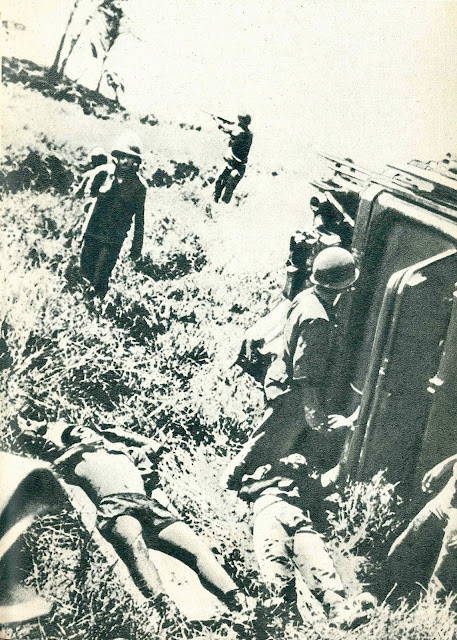The Vietnam War saw a sharp deterioration in the military situation in 1964. Bodies of Vietnamese killed by the Viet Cong (VC) were strewn about, as were the bodies of American officers killed by the Viet Cong. The first half of 1964 saw a doubling of terrorist incidents and an increase in desertions and defections of South Vietnamese troops; in the first half of 1964 alone, the death toll of U.S. troops rose to about 227.
Even clamoring for the establishment of fortified settlements throughout South Vietnam failed to stop the apparent retreat. During the Vietnam War, some 600 Viet Cong guerrillas suddenly emerged from the jungle and attacked the small fortified settlements. The Vietcong blew up the wire and strage with machine gun fire. The next morning, a rescue party of South Vietnamese troops arrived. A South Vietnamese soldier, whose family lived in the village, wailed over the body of his baby son. The baby was wrapped neatly in a straw mat and given a name tag for burial.
In August, the North Vietnamese army played a public role in the fighting. In the Gulf of Tonkin, a North Vietnamese torpedo boat attacked the American destroyer Maddox. Secretary of State Rusk warned immediately afterward, "If you do that again, you'll get stung. The jungle warfare by the Viet Cong in South Vietnam took an ominous new turn. For the first time, the Vietnam War crossed the 17th parallel when U.S. Navy pilots on the aircraft carrier Ticonderoga flew low over the Gulf and attacked North Vietnamese naval installations.
In the summer of 1964, some 56,000 Viet Cong spread their guerrilla war throughout South Vietnam. The guerrilla war was intensified by the resident North Vietnamese Army (NVA) influx via the Ho Chi Minh route. The Viet Cong were a front line force of independent groups and sympathizers allied together to wage an insurgency in South Vietnam. In reality, it was completely controlled by the North Vietnamese Communist Party and the North Vietnamese People's Army (PAVN). The Viet Cong, the communist fighters of North Vietnam, attacked the guerrillas. Viet Cong ambushes often involved hit-and-run ambushes in which they would ambush American soldiers and flee before being captured. They disguised themselves as civilians and local farmers to carry out guerrilla attacks.
From about 5,000 Viet Cong in early 1959, the number grew to about 100,000 by the end of 1964. The number of infiltrators in South Vietnam alone was estimated at about 41,000. The expansion of the insurgency reflected not only the amount of North Vietnamese personnel and weapons, but also the inability of South Vietnam to maintain a porous border, the inability of South Vietnam to weaken local Viet Cong influence, and the difficulty of South Vietnamese forces to reduce Viet Cong bases and secret zones over the years.

